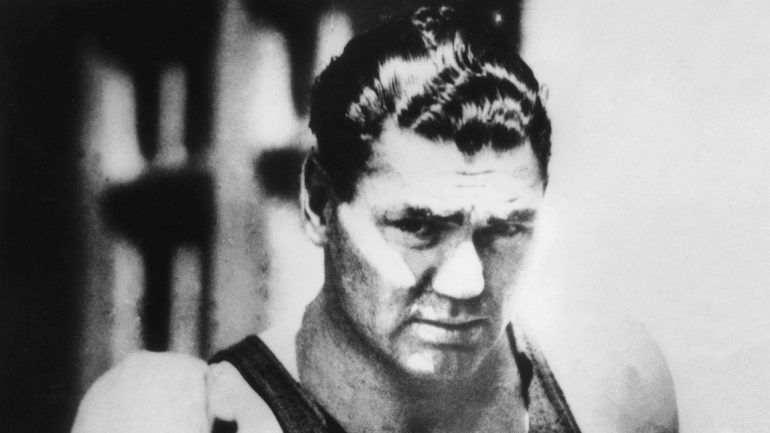10 Notable July 4 fights

4. 1912 – Ad Wolgast KO 13 Mexican Joe Rivers I, Vernon, California
Exactly one year after retaining his lightweight title against Owen Moran, Wolgast risked his lightweight championship against career featherweight Rivers. “Risked,” of course, was a relative term given the rough-and-tumble, barely regulated era, for back in the early 1900s a fight’s tenor and ultimate result lay with a single man – the referee. And going into this fight, Wolgast figured he had that angle more than covered.
Jack Welch was the third man in the Wolgast-Moran rematch and he openly said he favored Wolgast’s aggressive style over the scientific boxing epitomized by James J. Corbett. It was common knowledge that Welch was “Wolgast’s referee” and because of that reality Rivers knew going in that in order to win Wolgast’s title he had to score a clean knockout.
As it turned out, Rivers did score a knockout. Unfortunately for him, so did Wolgast. But more on that later.
 Wolgast, making his fifth defense, entered the ring with an enviable 47-1-9 record with 21 no-decisions while Rivers was 14-1-2, with the only loss a 16th round KO to future featherweight king Johnny Kilbane 10 months earlier. Turning pro two months before his 16th birthday, the 19-year-old Rivers was trying to become one of the sport’s youngest ever champions and was raring to go while an overly confident Wolgast didn’t seem to have his usual bounce or drive.
Wolgast, making his fifth defense, entered the ring with an enviable 47-1-9 record with 21 no-decisions while Rivers was 14-1-2, with the only loss a 16th round KO to future featherweight king Johnny Kilbane 10 months earlier. Turning pro two months before his 16th birthday, the 19-year-old Rivers was trying to become one of the sport’s youngest ever champions and was raring to go while an overly confident Wolgast didn’t seem to have his usual bounce or drive.
Rivers made Wolgast pay for his carelessness by cutting the champion’s ear in round two and after pelting Wolgast from all angles his gloves were covered in blood. Wolgast’s vaunted aggression had no discernable effect on the youngster and by the fourth Rivers opened a cut over Wolgast’s left eye, which, under the challenger’s constant pounding, soon became a slit.
Rivers’ hard pace began to wear on the teen-ager and the veteran Wolgast immediately pounced, both with his mouth and fists. Almost every punch was accompanied by a expletive-laced taunt and Wolgast’s wrestling tactics accelerated Rivers’ exhaustion. With both men now equally tired and marked up – Rivers’ face was now a mass of swellings – the punishment and abuse that was dished out was graphic even by the standards of that era.
The battered Wolgast initially refused to answer the bell for round 13 but a brandished beer bottle by chief second Herman Stizel caused him to reconsider. Exhausted beyond measure, Wolgast nevertheless pressed on, after which the rarest of rarities occurred – a double knockdown that probably would have ended in a double knockout, had fate, in the form of Welsh, had not intervened.
A split second after Rivers landed a one-two to Wolgast’s jaw, the champion, now pitching forward from the force of the challenger’s combination, landed a left that appeared to stray low. Both boxers fell, with Rivers dropping first and Wolgast crashing on top of him.
Welch began counting, and if he had allowed the action to flow normally he may well have counted both men out. But Welch inserted himself into the situation as never before, for while he tolled the count over Rivers he pulled Wolgast to his feet. Once he reached “10,” he declared Wolgast the winner and still champion. What made the situation worse was that the round-ending bell had sounded by Welch’s count of nine, which should have saved both boxers. For whatever reason, Welch either didn’t hear – or chose to ignore – the gong.
 The infuriated crowd, many of whom were rooting for Rivers, stormed the ring and police were summoned to regain control. They weren’t sure about what they had just seen, but they intrinsically knew that something was badly amiss.
The infuriated crowd, many of whom were rooting for Rivers, stormed the ring and police were summoned to regain control. They weren’t sure about what they had just seen, but they intrinsically knew that something was badly amiss.
A few weeks later Welch explained his actions, saying that Wolgast deserved the benefit of the doubt because not only did the champion land first, he also fell last. Since there was no rule covering this situation, Welch made an on-the-spot judgment. Feeling there had to be a winner in a championship fight, Welch extricated Wolgast while leaving the stricken Rivers to his own devices. When Rivers couldn’t arise, he was declared the KO loser. Despite the almost universal belief that Wolgast’s blows were low, Welch believed them to be legal.
Rivers’ attorney Earl Rogers said in a post-fight release that “it was the most gigantic swindle and the most wholesale bit of robbery that has come to my notice. As early as ten o’clock this morning I learned that a plot was afoot whereby Wolgast was to be given the victory no matter what the cost might be.”
On the other side, Hector J. Streyckman, who edited the Keystone comedies, created a print from the fight films and showed the crucial sequence to reporters.
“Wolgast dug his fist three times into Rivers’ midsection,” he said. “Then, Rivers’ knee was seen coming up in a convulsive action. Rivers was a foul fighter. He should have been disqualified.”
The two would meet again in January 1914, a non-title 10-round newspaper decision draw. But no matter what side of the fence one occupies, there was no dispute that the first Wolgast-Rivers fight was one of the most memorable – and controversial – fights ever staged.















